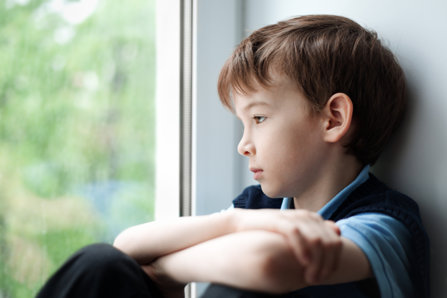What is the Real Effect of the Opiate Epidemic on Children?

In times of trouble, children are often harshly affected. In international conflict, war, famine, disease, poverty, and refugee crises, it comes as a blow when children are affected by those struggles.
Thanks to the opiate crisis, one can clearly see a new generation of youth severely affected by a crisis that is almost unique to the United States.
That is to say, millions of children born in the last twenty years have been dramatically affected by the opiate epidemic. One might say this is the first generation in recent history that’s been born into a severe drug problem.
What’s the story here? And what can be done about it?
New Data on Children Affected by the Opioid Crisis
There are some historical precedents. The 21st-century is not the first time the U.S. has struggled with drug addiction issues. It’s not as though drug addiction never existed before the turn of the century. To name a recent example, there was the crack cocaine epidemic of the 1980s.
However, the United States has possibly never experienced a drug problem quite like this one. And Generation Z, those born between about 1995 and 2015, are the kids who have been born into the nation’s worst-ever drug crisis.
U.S. News reported on recent studies that cast a grim shadow on the real effects of the opiate crisis on children. According to the article’s headline, the opioid crisis has now harmed more than two million kids. That is one example of the collateral damage of the drug crisis. And it’s collateral damage that is totally preventable. Furthermore, U.S. News lists “parental opioid misuse” as the primary means by which young people are affected by the opiate epidemic.
The full research project that U.S. News reported on was carried out by the United Hospital Fund’s Children’s Health Initiative.
It’s important to be very clear about something. When the research reports that more than two million children have been adversely affected by the opiate crisis, that is not to say that such children experienced only a single, momentary instance of harm from the disaster. It is usually lasting and ongoing harm.
To name some examples:
- These are children who are born with congenital complications brought on by a mother’s opiate drug use while pregnant.
- These are children who have had to grow up in homes torn asunder by parental drug use.
- There are kids who, born into drug-using households, also started using drugs at a very young age. Currently, about 170,000 American children and adolescents are using opiate drugs.
- These are kids who had to grow up in foster care because their parents had parental rights taken away, had to go to jail, or died from drug overdoses.
A Grim Future Ahead if Action Isn't Taken Now To End The Opioid Epidemic

That’s the present. What does the future look like? These current, adverse effects are projected to have long-term consequences. It's not certain, not for sure, (as it hasn’t happened yet), but the two million children born into homes rife with opiate abuse are expected to incur about $117 billion in health care costs, special education, and child welfare spending. Add to that another $62.1 billion in societal costs once such kids reach adulthood.
Another point to consider is that, because the opiate epidemic is still a genuine public health emergency in America, this problem of children affected by the epidemic is only going to get worse. The research says that, even if Americans start to get a handle on the opiate epidemic, it’s expected that the crisis will have seriously harmed 4.3 million kids by the year 2030.
“Kids who experience a greater number of ACEs
(Adverse Childhood Experiences) are more likely to become smokers and to be severely obese, suffer from depression, and develop substance use issues of their own.”
And there’s yet another concerning point to think about. The children who grow up in severe living conditions; these are not children who bear their burden in silence, without acting out in some way. According to the U.S. News article, “Kids who experience a greater number of ACEs (Adverse Childhood Experiences) are more likely to become smokers and to be severely obese, suffer from depression, and develop substance use issues of their own.”
This is a new generation of youth not only being born into an addiction crisis and being significantly harmed by it, but it is millions of kids who, if they are not helped, might become the addicts of tomorrow.
The U.S. News article concluded with a quote from Suzanne Brundage, the study's lead author and director of UHF's Children's Health Initiative. “The opioid epidemic is clearly driving forward a wave of children affected by family substance use disorder. We need policymakers, (the) private sector, community leaders, and the general public to start responding today.”
What Can Be Done Do to Create Positive Change?
One of the first steps that must be taken to create positive change is to prevent more children from being exposed to opiates. Children need to be educated on the harmful nature of opiate pain meds and other pharmaceuticals. Children have to know what these drugs are and why they are harmful.
Furthermore, children must be given healthy alternatives for the underlying reasons as to why they would want to experiment with drugs, in the first place. If children are facing difficulties and struggles in life, they have to be taught tools and strategies for addressing those problems. Addictive drugs should never even be considered as a “solution” for kids.

Children should be given access to positive and proactive groups. Groups like Sesame Street support raising awareness for drugs and teaching kids about the harmful effects of drugs. The goal has to be getting children away from the problem of drugs and then also teaching kids about the drug problem. Kids need to grow up in a safe environment, in safe homes, with access to educational groups that provide factual data about the harms of drugs.
Moving on from prevention, one of the primary strategies to saving future generations from the hardship and struggle of growing up in a drug-affected home also lies in helping those who are currently addicted. It's important to never turn the other way and ignore the drug problem. It has gotten to a point where so many millions of Americans are addicted that this health epidemic affects everyone in some way.
It's important to consider the future of the American population. That means putting the health and prosperity of children first and foremost. And that equates to making sure such kids have good homes to grow up in. If parents struggle with opiate addiction, they need to get help via residential treatment so they can be the ethical, loving, focused, responsible, and example-setting parents that their kids need them to be.
If you know someone who is struggling with a drug or alcohol addiction, make sure they get help at a qualified, long-term drug and alcohol treatment center. Keep in mind that you are not just trying to help them. You’re also trying to help the children who depend on those individuals for support.
Sources:
- https://www.usnews.com/news/healthiest-communities/articles/2019-11-13/the-opioid-crisis-has-affected-more-than-2-million-children
- https://uhfnyc.org/media/filer_public/6e/80/6e80760f-d579-46a3-998d-1aa816ab06f6/uhf_ripple_effect_national_and_state_estimates_chartbook.pdf
- https://sesamestreetincommunities.org/


 ®
®